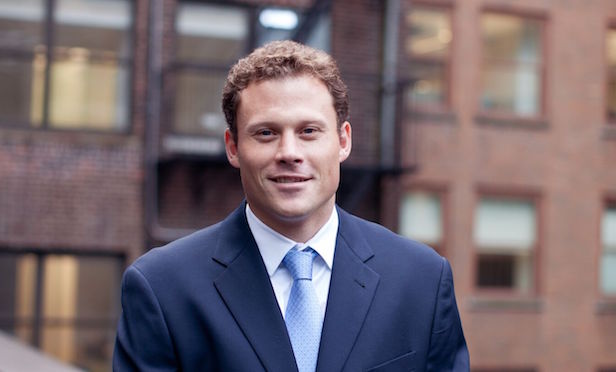 Justin Myers, senior managing director and principal at Lee & Associates NYC/ photo courtesy of Lee & Associates NYC
Justin Myers, senior managing director and principal at Lee & Associates NYC/ photo courtesy of Lee & Associates NYC
NEW YORK CITY—One doesn't have to be a real estate expert to have noticed the fitness trend that has taken New York City, and the nation, by storm. In addition to the big box gyms that have always existed as well as the new crop of boutique fitness studios that are taking over the market, there are now services such as ClassPass Live that mean those wanting to work out don't even need to leave their homes. Such trends indicate the vast range of options for today's fitness consumer. As a former professional soccer player, I have a special interest and experience in the intersection of fitness and real estate.
As an office tenant representation specialist, I am well aware of how important it is for tenants to have high-quality, nearby health and fitness options. In a move away from standalone fitness being the only choice for consumers, numerous workplaces and residential buildings are being outfitted with gyms, many of which offer boutique classes. Even the Empire State Building has been updated to incorporate an in-house fitness center.
Nowadays, companies without on-site fitness may offer stipends for their employees to take classes elsewhere. Other offices provide shower facilities to accommodate the growing number of people who bike to work in this health-conscious age.
Companies like ClassPass have had enormous success, both by offering boutique fitness classes at discounted rates and creating at-home initiatives such as ClassPass Live. In 2017, I represented ClassPass in their lease of 7,000 square feet of studio space in Sunset Park, in Brooklyn's Industry City. This studio space, which the company uses to hold classes and to film workouts for its app, had to meet certain requirements. The most important criterion was being column-free.
Fortunately, the property owner was willing to build out 6,000 square feet of column-free space at no cost to the tenant. High ceilings are also a huge plus for fitness tenants and this space came outfitted with 16-foot ceilings. In addition to this space, the company has significant amounts of office space. This includes 28,019 square feet in Manhattan, plus multiple other offices around the world.
Considering the rate at which the demand for fitness is growing, it wouldn't be surprising if property owners began to enter the business of fitness themselves instead of just leasing their retail spaces to boutique fitness brands. It's also likely that combination uses will become more popular. Many Equinox members currently use the space as a place to work out as well as a place to get work done, thanks to the luxurious lounge areas and wireless internet connections. I predict that this type of arrangement will grow as consumers always like having a one-stop shop for multiple needs and it's advantageous for property owners as well in terms of growing the value of their spaces.
With so many options for working out nowadays, whether at a big box gym such as Equinox, at a boutique fitness studio, or via an app from the comfort of your own home, brokers working with these tenants will stay busy as long as they're ready to adapt to the next trends to arrive in this rapidly changing market.
Justin Myers played professional soccer for five years, with Chivas USA, the Puerto Rico Islanders and Hoa Phat Hanoi in Vietnam. He is now a senior managing director and principal at Lee & Associates NYC. The firm provides corporate advisory and real estate services including office and retail brokerage, sales and investments and project and property management. The views expressed in this article are the author's own and not those of ALM's Real Estate Media Group.
© Touchpoint Markets, All Rights Reserved. Request academic re-use from www.copyright.com. All other uses, submit a request to [email protected]. For more inforrmation visit Asset & Logo Licensing.






